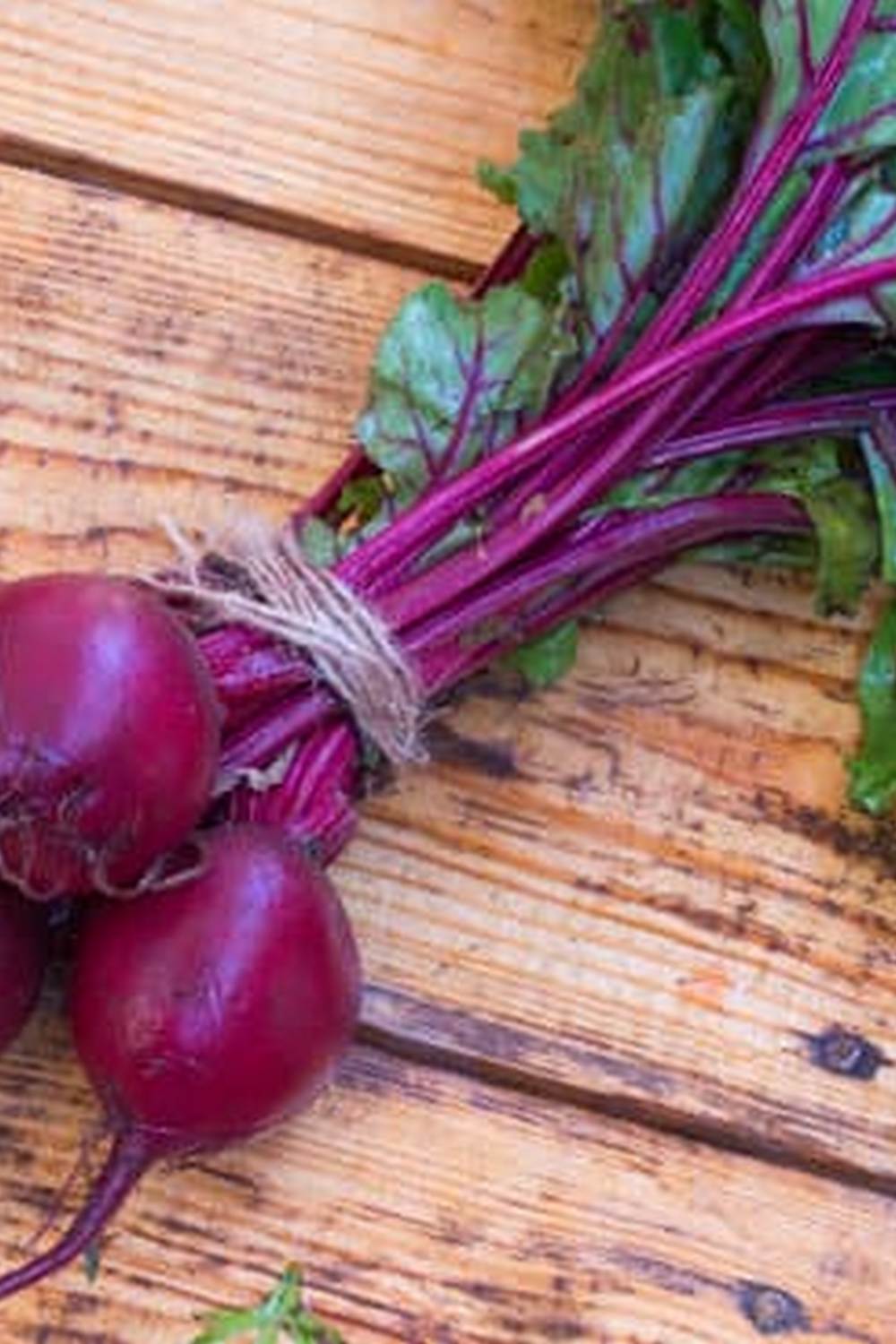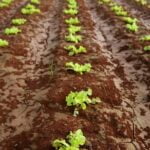Zone 5A vegetable gardening presents a unique set of challenges and rewards for avid gardeners. Understanding what Zone 5A entails is crucial for successful cultivation of a variety of vegetables in this climate. With the right planning and care, gardeners can enjoy a bountiful harvest in Zone 5A.
In Zone 5A, the growing season is shorter compared to other zones, making it important to choose the right vegetables that thrive in cooler temperatures. Cold-hardy options are ideal for this region, allowing gardeners to enjoy fresh produce even in colder weather. Planning your Zone 5A vegetable garden requires careful consideration of factors such as location, layout, and size to optimize growth and yield.
Whether you are a novice or experienced gardener, understanding the unique characteristics of Zone 5A will help you make informed decisions when it comes to soil preparation, plant selection, and seasonal care. By following best practices and implementing techniques tailored to this specific zone, you can overcome common challenges and achieve success in your Zone 5A vegetable garden.
Planning Your Zone 5A Vegetable Garden
Choosing the Right Location
When it comes to planning your Zone 5A vegetable garden, selecting the right location is essential for success. Look for a spot in your yard that receives at least six to eight hours of sunlight daily. Vegetables love sunlight, so choosing a sunny location will help your plants thrive. Avoid areas that are constantly shaded by buildings or trees, as this can hinder plant growth. Additionally, consider proximity to a water source for easy watering and accessibility.
Designing the Layout
The layout of your Zone 5A vegetable garden plays a crucial role in its productivity and efficiency. Opt for raised beds if you have poor soil quality or drainage issues, as they allow for better control over soil conditions. Space out your crops strategically to prevent overcrowding and make it easier to access and care for each plant. Consider incorporating paths between rows for easy navigation and maintenance tasks.
Determining the Size
Deciding on the size of your Zone 5A vegetable garden is another important aspect of planning. Start small if you’re new to gardening or have limited time and resources, then gradually expand as you gain experience.
Keep in mind that larger gardens require more effort in terms of planting, watering, and maintenance. Consider factors such as how much produce you want to harvest, available space in your yard, and how much time you can dedicate to tending to your garden when determining the size.
Best Vegetables for Zone 5A
When it comes to successful Zone 5A vegetable gardening, choosing the right vegetables that can thrive in this specific climate is crucial. To ensure a fruitful harvest, it’s essential to select plants that are well-suited for the colder temperatures and shorter growing season of Zone 5A. Here is a comprehensive list of vegetables that are perfect for Zone 5A, including some cold-hardy options and tips on when to plant them:
- Cold-Hardy Vegetables: In Zone 5A, it’s important to focus on cold-hardy vegetables that can withstand frost and cooler temperatures. Some excellent options include kale, spinach, Brussels sprouts, carrots, beets, radishes, and Swiss chard. These vegetables not only can tolerate the chillier conditions but also tend to have improved flavor after exposure to light frosts.
- Spring Vegetables: When planning your Zone 5A vegetable garden, consider planting cool-season crops in early spring when the soil starts to warm up. This is the perfect time to sow peas, lettuce, arugula, radishes, and onions. These vegetables thrive in cooler weather and will yield an early harvest before the heat of summer arrives.
- Summer Vegetables: As the warmer months approach in Zone 5A, you can transition to planting warm-season crops like tomatoes, peppers, cucumbers, zucchini, beans, and squash. Make sure to wait until after the last frost date in your area before planting these summer favorites outdoors. Taking proper care of these plants throughout the growing season will reward you with a bountiful harvest in late summer and fall.
By selecting a variety of vegetables that are well-suited for Zone 5A conditions and paying attention to their specific planting requirements and timelines, you can set yourself up for a successful vegetable garden that thrives in this unique climate zone. Don’t forget to plan out your garden layout carefully according to sun exposure and spacing needs for each crop to maximize productivity throughout the growing season.
Soil Preparation and Maintenance
Zone 5A vegetable gardening requires special attention to soil preparation and maintenance to ensure optimal growth and a bountiful harvest. The first step in preparing the soil is testing its pH level and nutrient content. You can easily do this by using a home soil test kit or sending a sample to a local extension service. Knowing the current state of your soil will help you determine what amendments are needed for successful vegetable cultivation in Zone 5A.
Once you have the results of your soil test, it’s time to amend the soil as necessary. In Zone 5A, it’s common for soils to be slightly acidic, so adding lime may be required to raise the pH level to the optimal range for most vegetables.
Additionally, incorporating organic matter such as compost or well-rotted manure will improve soil structure, drainage, and fertility. Regularly adding organic matter also helps maintain soil health over time, ensuring that your vegetables receive essential nutrients for growth.
To maintain optimal soil health in Zone 5A throughout the growing season, it’s important to practice good garden hygiene. This includes mulching your vegetable beds to retain moisture, suppress weeds, and regulate soil temperature.
Regularly watering your garden during dry periods is crucial, as well as keeping an eye out for signs of pests or diseases that could impact plant growth. By following these detailed instructions on soil preparation and maintenance in Zone 5A vegetable gardening, you’ll be well on your way to a successful harvest year after year.
| Soil Preparation Steps | Maintenance Practices |
|---|---|
| Test soil pH and nutrient levels | Mulch vegetable beds regularly |
| Amend with lime if pH is low | Water gardens during dry periods |
| Add organic matter like compost | Monitor plants for pests/diseases |
Seasonal Care Guide
Spring
In Zone 5A, spring is a crucial time for gardeners as it marks the beginning of the planting season. As the weather warms up and the ground thaws, it’s time to start preparing your garden for the upcoming growing season. Start by cleaning up any debris left over from winter and testing your soil to determine if any amendments are needed.
Once the soil is ready, you can begin planting cool-season crops such as lettuce, spinach, peas, and radishes. Be sure to water your newly planted seeds regularly to help them establish strong roots.
Summer
As summer arrives in Zone 5A, it’s essential to stay on top of watering and fertilizing your vegetable garden regularly. The warm weather and longer days mean that plants will need more water to thrive, so be sure to monitor soil moisture levels closely. Consider using mulch around your plants to help retain moisture and reduce weeds.
Additionally, applying a balanced fertilizer every few weeks can ensure that your vegetables have the nutrients they need to produce healthy yields. Keep an eye out for pests during this time and take action promptly if you notice any signs of infestation.
Fall
In Zone 5A, fall brings cooler temperatures and shorter days, signaling the end of the growing season for many vegetables. As you prepare for colder weather, consider planting cold-hardy crops like kale, Brussels sprouts, and carrots that can withstand frost. Harvest any remaining vegetables before the first frost hits and consider preserving them through canning or freezing.
It’s also a good time to clean up your garden beds by removing spent plants and adding compost or organic matter to enrich the soil for next year’s growing season. Don’t forget to protect any late-season crops with row covers or cold frames to extend their harvest into late fall or even early winter in Zone 5A.
Extending the Growing Season
Row covers are lightweight, breathable fabrics that are placed directly over crops to provide protection from frost while still allowing light, air, and moisture to reach the plants. These covers can increase the temperature around the plants by a few degrees, creating a microclimate that is more favorable for growth. Row covers are easy to install and remove, making them a versatile option for extending the growing season in Zone 5A.
Cold frames are another effective way to extend the growing season in Zone 5A. These structures are essentially miniature greenhouses that capture solar energy during the day and retain heat at night. By placing cold frames over your vegetable beds, you can create a protected environment where plants can thrive even as temperatures drop outside. Cold frames come in various sizes and designs, ranging from simple DIY projects to more elaborate commercial options.
Hoop houses, also known as high tunnels, are another popular choice for extending the growing season in Zone 5A. These structures consist of metal or PVC hoops covered with plastic sheeting that create a tunnel-like shape over garden beds.
Hoop houses provide excellent protection from frost, wind, and pests while trapping heat inside to create a warmer microclimate for vegetables. With proper ventilation and temperature control, hoop houses can significantly lengthen the growing season and allow gardeners to cultivate crops beyond their typical harvest window.
Overcoming Common Challenges
Planting a vegetable garden in Zone 5A comes with its own set of challenges, including dealing with frost, a short growing season, and temperature fluctuations. Frost can be particularly damaging to tender plants, so it is essential to be mindful of the last spring frost date and the first fall frost date in this zone. Planting frost-resistant vegetables or using protective measures like row covers can help mitigate the damage caused by frost.
The short growing season in Zone 5A requires gardeners to carefully plan their planting schedules to make the most of the available time. Cold-hardy vegetables like broccoli, kale, and carrots are excellent choices for this region as they can withstand cooler temperatures and even improve in taste after exposure to light frosts. Additionally, starting seeds indoors or using transplants can give your vegetables a head start and extend the growing season.
Temperature fluctuations are common in Zone 5A, where daytime temperatures can vary significantly from nighttime temperatures. This fluctuation can stress plants and impact their growth. To combat this challenge, consider planting heat-loving vegetables like tomatoes and peppers in warm microclimates or using mulch to regulate soil temperatures. Additionally, monitoring weather forecasts regularly can help you prepare for sudden temperature changes and protect your crops accordingly.
| Common Challenges | Strategies |
|---|---|
| Frost damage | Plant frost-resistant vegetables or use row covers. |
| Short growing season | Choose cold-hardy vegetables; start seeds indoors; use transplants. |
| Temperature fluctuations | Plant heat-loving vegetables in warm microclimates; use mulch; monitor weather forecasts. |
Success Stories and Tips From Zone 5A Gardeners
In conclusion, Zone 5A vegetable gardening presents its unique set of challenges and rewards. By following the guidance provided in this article, you can set yourself up for a successful and abundant harvest in your Zone 5A garden. Remember that proper planning, soil preparation, seasonal care, and techniques for extending the growing season are key components to thriving in this zone.
One of the most valuable aspects of Zone 5A vegetable gardening is the community of experienced gardeners who are willing to share their success stories, tips, and tricks. Learning from their experiences can provide valuable insights and shortcuts to help you navigate through the challenges of gardening in this specific zone.
Whether it’s dealing with frost, maximizing a short growing season, or managing temperature fluctuations, there are tried-and-true methods that have been proven by seasoned Zone 5A gardeners.
In the end, Zone 5A vegetable gardening is a rewarding endeavor that offers not only delicious homegrown produce but also a sense of accomplishment and connection to nature. With a combination of knowledge, dedication, and a bit of experimentation, you too can enjoy a thriving vegetable garden in Zone 5A. Keep learning, keep adapting, and keep sharing your own success stories to contribute to the collective wisdom of fellow gardeners in this zone.
Frequently Asked Questions
What Vegetables Grow Best in Zone 5a?
Some vegetables that grow best in Zone 5a include tomatoes, peppers, cucumbers, zucchini, lettuce, kale, and radishes. These vegetables are well-suited to the cooler temperatures and shorter growing season typical of this zone.
When Should I Start Seeds in Zone 5a?
In Zone 5a, it is recommended to start seeds indoors 6-8 weeks before the last frost date. This allows the seedlings to have a head start and be ready for transplanting once the weather warms up. Keeping track of local frost dates is crucial for successful seed starting.
When Should Zone 5 Be Planted?
The planting time in Zone 5 typically begins around mid to late spring, depending on the specific vegetable or plant being grown. It is essential to wait until after the last frost date to avoid any damage to your plants. Pay attention to the specific requirements of each plant for optimal planting times.

If you’re looking to get into vegetable gardening, or are just looking for some tips on how to make your current garden better, then you’ve come to the right place! My name is Ethel and I have been gardening for years. In this blog, I’m going to share with you some of my best tips on how to create a successful vegetable garden.





